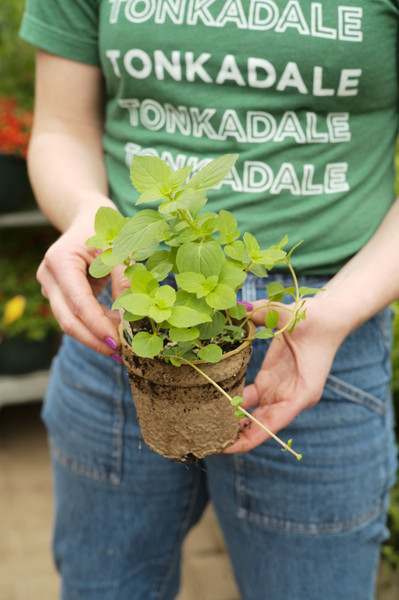Using Herbs for Tea
Posted by Jessie Jacobson on Jun 19th 2023
Using Herbs for Tea
Herbs are easy to grow and care for in the garden. Their use reaches far and wide. Herbs are most often used in cooking and flavoring food, but there is a growing trend towards planting herbs just for making tea. Herbs can be used for teas both fresh or dried.
Best Herbs for Tea
Mint
Flavors depend on the variety of mint, ranging from cool and refreshing, to slightly spicy. Mint pairs well with many other tea ingredients to create diverse flavor combinations.
Lemongrass
A slightly herbal, lemony flavor that’s very refreshing.
Chamomile
A floral, grassy, slightly bitter flavor. For tea, the flowers rather than the foliage are used.
Lemon Verbena
Earthy, herby, and slightly citrusy.
Lavender
Floral, aromatic, earthy, minty.
Lemon Balm
Citrusy, minty, and tart.
How to Grow Herbs
Herbs can be easily grown in containers, raised beds, or in the garden. Herbs love full sun but will do just fine 4-5 hours or direct sun. We recommend our house blend, Tonka Terra for growing herbs in containers and raised beds. Mix and match herbs in containers, about 4, 4” herbs will fit in a 12” pot. Water well throughout the summer paying special attention to containers as they will dry out more quickly than raised beds and gardens. Fertilize at the time of planting and then after each large harvest with Espoma’s Garden Tone.
How to Harvest Herbs
- Be sure to use a sharp, clean kitchen shears or scissors.
- Harvest in the morning, before the heat of the day and before plants have had a chance to flower. This will ensure best flavor.
- Leafy, annual herbs can be cut back by about half and still have enough leaves left to keep growing.
- Harvest herbs with woody stems such as lavender by cutting back up to one third of the plant at a time. Strip leaves from woody stem if you plan to use them fresh.
- After harvest, wash gently with cold water, shake dry.
Prepare and Dry Herbs for Tea
- Gather herbs in small bunches and tie together with twine.
- Hang upside down in a warm, dry place with good air circulation and out of direct sunlight.
- For chamomile and lavender, fresh flowers can be used for tea. Pick off the plant and dry by spreading them out in a single layer on a tray or baking sheet.
- Herbs will be dry in about a week.
- Store in jars in a dark pantry or cupboard.
Brew Your Tea
If you are using fresh herbs, use 1/4 cup per cup of water. Pour boiling water over herbs. Let steep for three to five minutes. Strain before serving.
If you are using dried herbs, use 1 teaspoon per cup of water using the same method as above.
For iced tea, brew at double strength.
The Benefits of Herbal Tea
Herbal teas are not only tasty but also offer an abundance of health benefits. Benefits include stress relief, digestive aid, help with sleep, immunity boost, headache relief, alertness in the case of peppermint, and so much more. Remember, not all bodies are the same. Best to start slow and see which herbs work for you when brewing tea.
Cheers!

